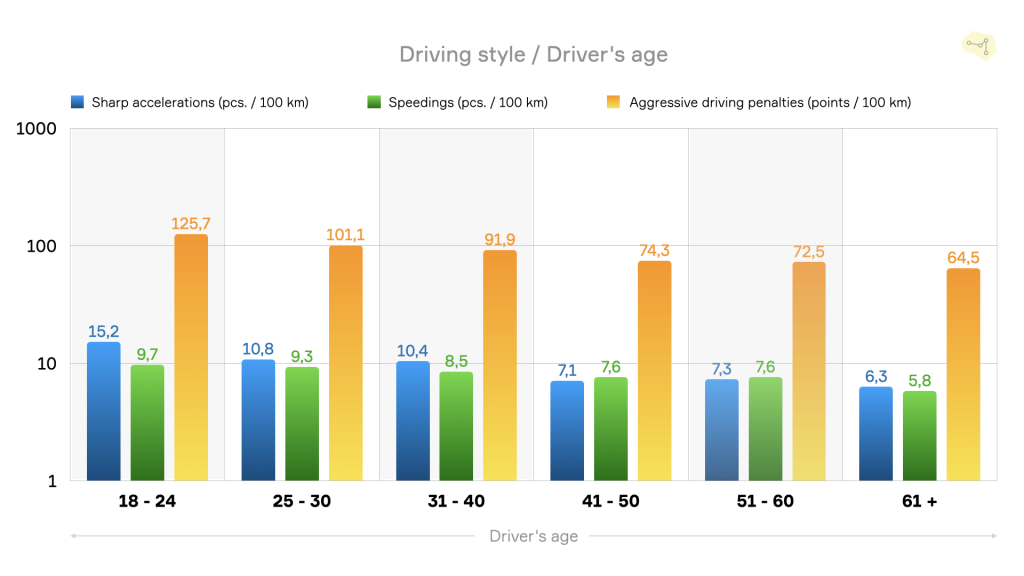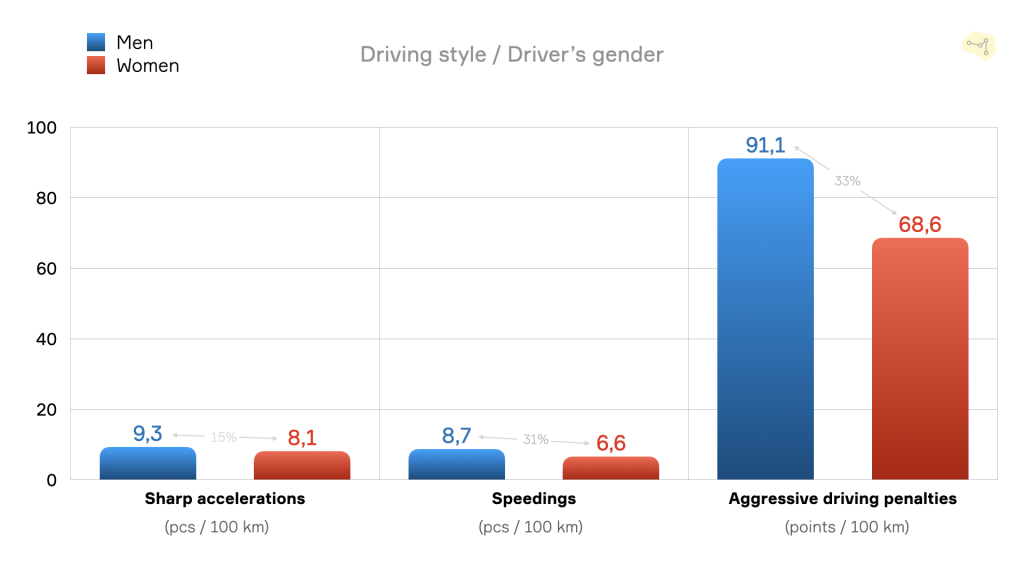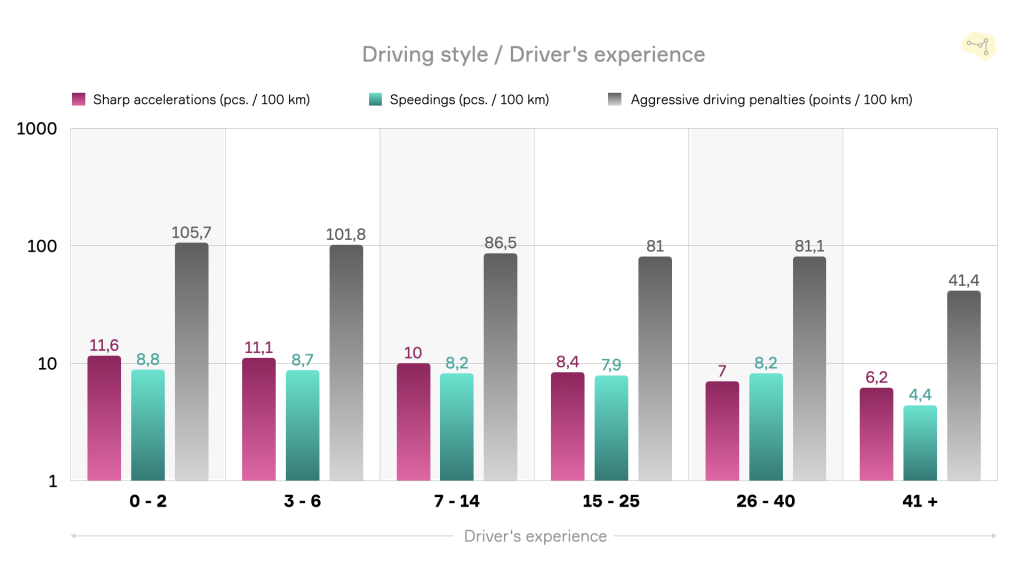
Men spend more time behind the wheel, women drive less aggressively and value comfort more, while the annual mileage depends on the age of drivers, and safety depends on age and experience. These are some of the results of the large annual study "Driving 2021", conducted on the basis of telematics data from cars connected to the Connected Car platform of the Smart Driving Labs (SDL).
The main task of the SDL "Driving 2021" study was to identify stable patterns in the operation of cars related to the age, experience and gender of drivers. According to the analysis of a sample of data on several thousand cars, the key factors of driving safety are age and experience. The gender of the owner affects the safety indicators, but to a lesser extent.

Women drive less aggressively. They make 15% fewer sharp accelerations and 31% fewer times exceed the speed limit, earning 33% fewer penalty points for aggressive driving than men.
According to the study, with age, the driving style becomes less aggressive among both men and women. Young drivers (up to 24 years old) make more than 2 times more sharp accelerations, exceed the speed by 28% more times and earn 69% more penalty points than drivers aged fr om 41 to 50 years. Older drivers (over 61 years old) exceed the speed lim it by 23% less, accelerate/brake sharply by 12% less and receive 13% less penalty points (compared to the age category from 41 to 50).

The findings show how the behavior on the road changes with age. It can be traced by the sharp lateral and linear accelerations that statistically most often lead to accidents. Drivers of the age category up to 24 years old have an average of up to 15.2 events per 100 km of mileage, in the category from 25 to 30 there are already 10.8 events, in the category from 31 to 40 – 10.4, and from the age of 41 there is a sharp decline-up to 7.1. At the same time, drivers older than 61 years make only 6.3 sharp accelerations per 100 km of the way.
Says Alexander MOROZOV, Director of the Statistics and Analytics Department of the Smart Driving Labs: "This is due not only to youth and the corresponding character, but also to the lack of driving experience and, as a result, more drastic responses to road situations, which we see on the example of a huge number of sharp accelerations and braking. The fact that it's not just about age also demonstrates the dependence of driving style on experience – it is almost the same as on age and is also direct. Moreover, we see that a noticeable decrease in acceleration and braking occurs in the group with driving experience of 5-7 years, and a significant one – from 15 years."
As for mileage, men on average drive 25% more and spend 14% more time behind the wheel (that is, they drive at a higher average speed).

Young drivers (under 24 years of age) drive an average of 10% longer distance per day than older drivers and are driving for 23% more time. Perhaps this is due to the need to gain driving experience and more frequent use of personal transport. At the same time, older drivers (over 60 years old) on average spend 30% less time behind the wheel and drive 24% shorter distances than middle – aged drivers. The length of service does not affect the amount of time spent driving and the distance traveled.
Comfort in the form of a heated or air-conditioned cabin before the trip, which is achieved by using autorun, is more appreciated by women than men. Women use autorun on every 9th trip, while men do it only for every 11th trip. Most often, autorun is used by drivers aged from 21 to 40 years in about 12% of trips. Less often, the most experienced and elderly drivers-aged from 60 and with more than 40 years of experience on average start a car remotely only in 4% of trips.
The study used data only on cars used for personal purposes. The cars belonging legal entities, taxis, as well as cars that drive more than 8 hours a day on average were excluded from the sample.
-

 Smart Driving Labs28.05.2021
Smart Driving Labs28.05.2021
AVTOVAZ announces the launch of the first LADA model connected to the LADA Connect telematics platform developed together with the Smart Driving Laboratory. It allows to remotely control the car`s systems using a smartphone. For buyers of the "connected" version of Granta, individual service conditions and special insurance programs will also be available, which will make the most popular LADA model even more affordable. -

 Smart Driving Labs26.08.2021The Smart Driving Laboratory has launched an automated system for updating and individualizing the Connected Car cartographic resources of the Smart Driving Platform. The maps will be updated on a weekly basis, primarily where customers ' vehicles are operating taking into account their wishes and tasks. The new update mode is available for mapping coverage of Russia, Kazakhstan, Belarus and Brazil.
Smart Driving Labs26.08.2021The Smart Driving Laboratory has launched an automated system for updating and individualizing the Connected Car cartographic resources of the Smart Driving Platform. The maps will be updated on a weekly basis, primarily where customers ' vehicles are operating taking into account their wishes and tasks. The new update mode is available for mapping coverage of Russia, Kazakhstan, Belarus and Brazil.










